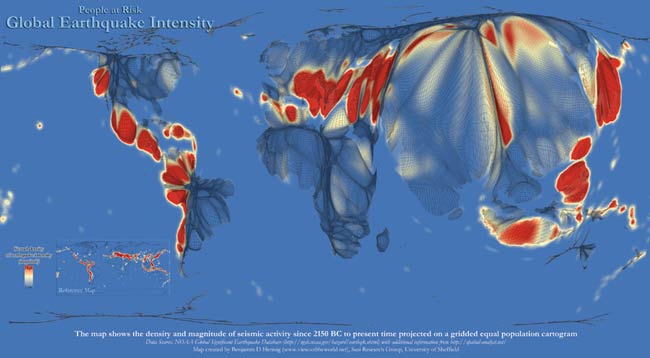
Global Quake Risks: New Map Shows Most Vulnerable Areas

A new world map, created using 4,000 years of earthquake records, shows where people around the globe are most at risk from dangerous seismic activity.
The map provides a visualization of all major earthquakesfrom 2150 B.C. to the present day that meet at least one of several criteria, including causing approximately $1 million or more in damage, killing 10 or more people, generating a tsunami or having a magnitude of 7.5 or greater.
The map shows not only the areas that are at highest risk, but also demonstrates how this risk relates to global population distribution — in effect showing who is most at risk of seeing a major earthquake.
"Growing numbers of people live in highly vulnerable areas. The recent earthquakes in Japan and also in Christchurch are a tragic reminder of the fragile relationship between human livelihoods and natural hazards," said Benjamin Hennig, creator of the map and a postgraduate researcher in the Department of Geography at England's University of Sheffield.
In addition, Hennig has created a new, more detailed map of Japan, which shows that the majority of the island nation's urban population — 80 million people — are concentrated along the Pacific coast.
The map also includes Japan's topography and the surrounding ocean's geography and water depth, which played a crucial role in the development of the devastating tsunami that caused much of the destruction on the densely populated Pacific shore.
"The maps help us to get a better understanding of the relation between natural risks and global population patterns," Hennig said.
Sign up for the Live Science daily newsletter now
Get the world’s most fascinating discoveries delivered straight to your inbox.











